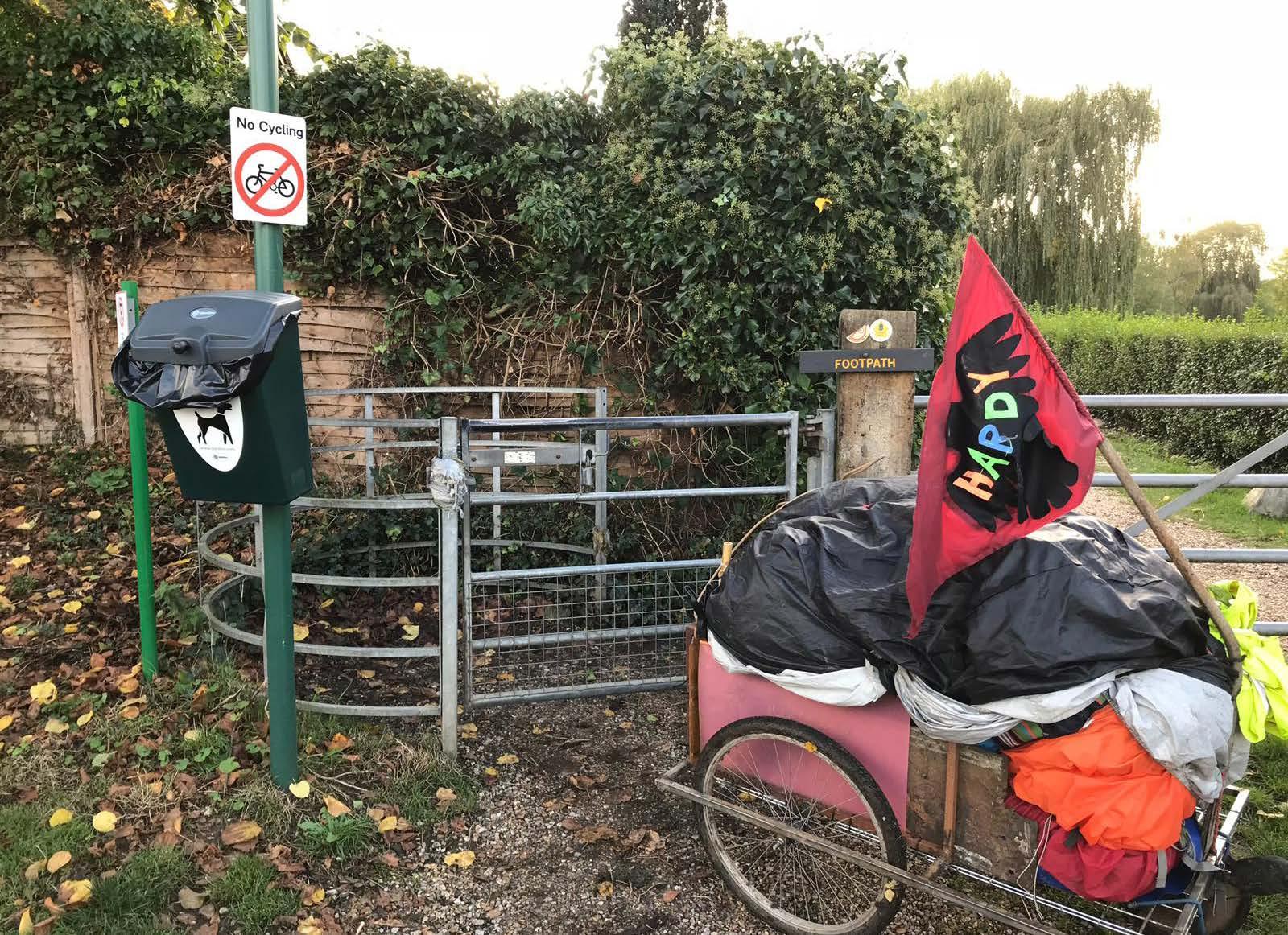
11 minute read
30 NEXT STEPS
NEXT STEPS Thinking collectively, working together
Ellen Wilkinson speaks to three artist collectives to find out how several heads can be better than one.
Advertisement
Collective action hit the art headlines at the end of 2019 when that year’s four Turner Prize nominees formed a collective to split the award and share its £40,000 prize equally. But collective and collaborative practice is nothing new. Artist-led projects have always worked in this way, sharing time, skills, resources, knowledge and labour. Now, with already uncertain times rocked even further due to the Covid-19 pandemic and its social, economic and cultural fallout, the benefits of working collaboratively are perhaps more relevant than ever. For collectives Shy Bairns, Caraboo Projects, and The Centre for International Women Artists, putting heads together to collaborate is an artistic no brainer.
Shy Bairns: “A big benefit is having a good time with people you like” Manchester-based Shy Bairns is the collaborative practice of artists, designers and curators Izzy Kroese, Erin Blamire, Eleanor Haswell and George Gibson. Since 2016 they have been working together to make books and zines, run workshops and put on exhibitions. The four members met on their foundation course at Sunderland University. They made their first zine together because, says Kroese, “we were too shy to ask

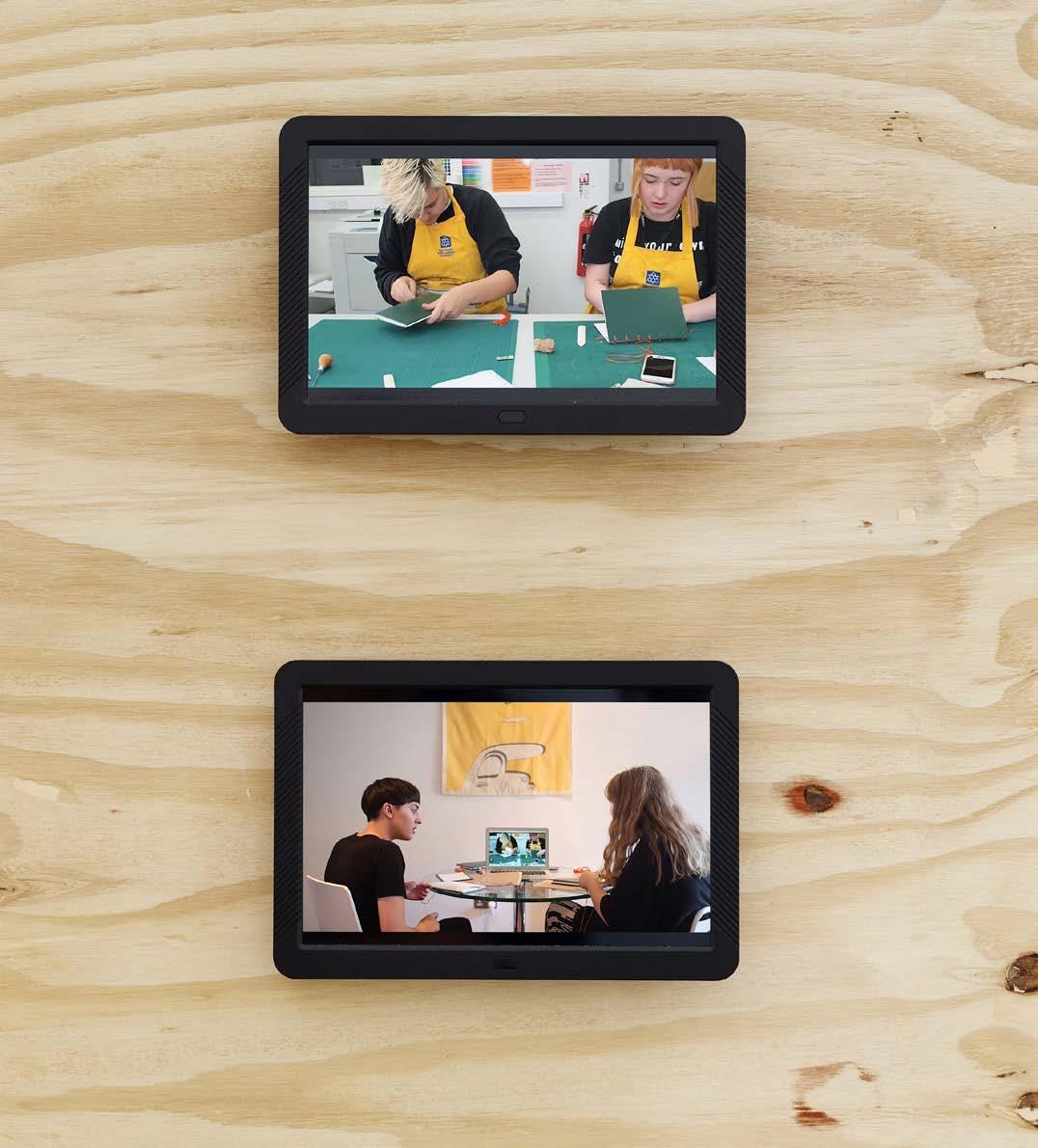
3
to hang out without an excuse”. Shy Bairns continues to be grounded in friendship: “We like each other a lot, and a big benefit of collaboration is having a good time with people you like.” While still students the group created zines as a platform for artists in North East England. In 2018 they were selected for New Contemporaries. As part of its exhibitions in Liverpool and London, Shy Bairns presented a zine about accessibility in the art world and ran zine-making workshops in response to the shows. Shy Bairns’ current work addresses fandom and how fan art relates to contemporary art. “The focus of our work is always changing based on what we’re interested in,” says Kroese. “We probably got interested in fandom because George started binging Lost.” The collective is also working towards opening a gallery in Manchester, which will focus on the intersections of book making and contemporary art. In preparation they are developing the curatorial aspects of their practice and are participating in the four-year GUILD programme at Leeds’ East Street Arts, in partnership with a-n, which is supporting 20 artist-led initiatives across the UK. This programme has prompted Shy Bairns to work in some unexpected ways. “We’re working on an actual business plan,” says Kroese. “It’s not an activity you might associate with an arts collective, but being part of a team, with a range of skills, really lends itself to being ambitious with your aims and gives you confidence to put yourself out there.” Reflecting on other advantages of collaborative working, Kroese says: “Four minds are better than one. Everyone feeds in new ideas based on their experiences: what they’ve been seeing, what they’ve been reading, what they’ve been binging. Collaboration pushes individual ideas a lot further than they would have gone without that process.” Making a collaboration last requires an investment in these relationships: “Stay honest with each other,” advises Kroese, who also notes that worrying about how long it will last is really a waste of energy. “When we started out, people kept asking us if it would last. Who cares! Do what you want for as long as you want to. Keep it exciting. If it’s not exciting you, change what you’re doing.” Collaboration is at the heart of Shy Bairns’ practice, extending beyond its four members. Upcoming projects include curating an exhibition at Manchester’s Bankley Gallery in collaboration with curator Will Marshall as part of a year-long project called ‘Intersections’. In June – lockdown permitting – Shy Bairns takes part in a curatorial residency at PINK Gallery, which will involve an exhibition and making a temporary print space in the gallery. Shy Bairns’ future space in Manchester is planned in the same collective spirit. Kroese explains: “When we started out our work was often overlooked, considered too close to being an exhibition handout to have much worth. We want to help contemporary bookmakers to thrive and for our future space to be as active and collaborative as possible.”
Caraboo Projects: “We couldn’t do it without all of us – we all chip in” Bristol-based Caraboo Projects is a contemporary art organisation founded and run by artists and educators Felicia Cleveland Stevens, Jack Friswell, Adam Hedley, Jenny Male, John O’Hare, Mary Roberts-Holmes, Phil Root and Rowan Shaw. Since 2018 they have programmed exhibitions, residencies, workshops and film events; worked with schools; run local community events; and, until recently, managed 23 studios in south Bristol.
The organisation emerged from a shared drive to create something new in the city. “We didn’t all know each other well before we started the project,” says Root, “but the idea of what we wanted the project to be evolved naturally. We knew we wanted to support other artists and give them a platform, and also create an open, comfortable, welcoming space for the public.” Cleveland Stevens explains that things moved quickly after initial pub meetings to discuss ideas and shared

aims. “Very soon we found a space. We raised £6,000 through a Kickstarter over our first summer, which paid for building, clearing and cleaning work and supported our first three exhibitions.” One of the benefits of working as a collective is being able to share the huge range of jobs needed to run a space. “There are lots of different skills in the group and we couldn’t do it without all of us,” says Male. Cleveland Stevens explains that “everyone naturally started to carve their own role, some of us working on curating, some on workshops and outreach, others on website and marketing, and some on funding and management. We all chip in with things like running the bar on opening night and cleaning the toilets.” Like many artist-led spaces, Caraboo Projects is run on a voluntary basis so funding and time are balancing acts. “Working with limited money can help you to be more creative,” Cleveland Stevens says, but, adds Male, “we all have other jobs and practices, so it can be challenging finding enough time together.” For Art Licks Weekend 2019 in London, Caraboo Projects was invited to create a collaborative work exploring ideas of interdependence. Working with artists from their studio community, an idea that “had begun as a bit of a joke” – to walk together from Bristol to London – turned out to be the perfect way to explore the festival’s theme. During the 160-mile journey along historic trade routes with a wagon built from found objects, the walkers recorded their encounters and observations. After seven days they arrived at Standpoint Gallery, where they celebrated and exhibited their journey through video, sound and the wagon itself. “Despite the rain barely stopping all week, a few hairy situations involving fences, and endless blisters, it was an incredible week where we could slow right down,” explains Male. Contemplating how much Caraboo Projects has done in such a short time, Shaw notes: “It’s always quite surprising how supportive people are when you tell them about your idea and how many people get excited about the things you’re excited about.” Cleveland Stevens advises graduating students thinking of forming a collective to “get to know as many people working in the arts in your city as you can”. Male, meanwhile, highlights the importance of continuing to learn: “There’s lots of training and information available around fundraising, finance and business development – skills we don’t necessarily have when we finish art school but are really useful for running a space.” Root adds: “If you’re staying in the city where you’ve studied, keep in touch with tutors and your art school because you’ve got an audience of students already there. It’s really important for artist-run spaces to be open to exchange with students.”
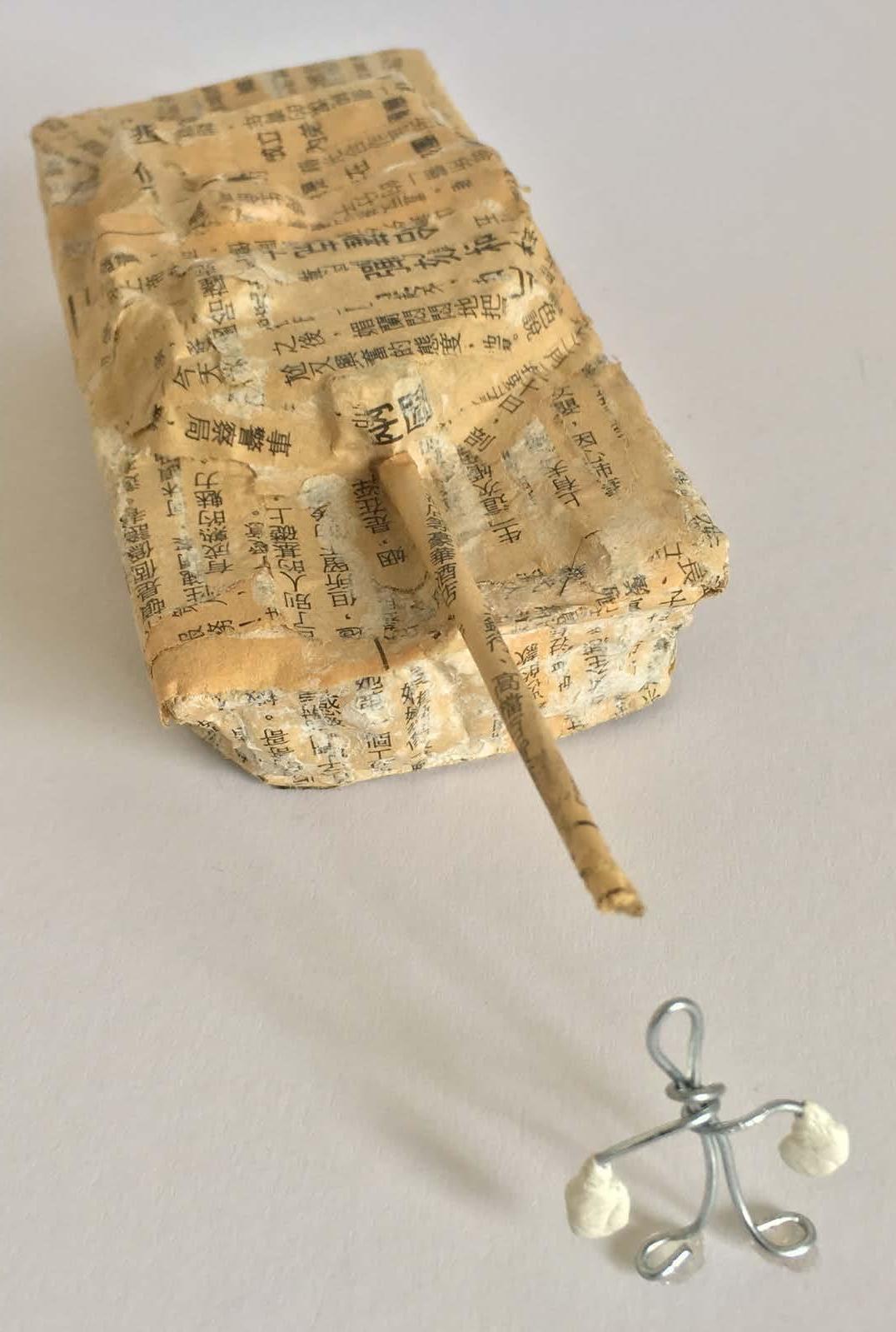
Centre for International Women Artists: “Working together strengthens our bond” The Centre for International Women Artists (CIWA) is a Manchester-based supportive network with and for artists based in the North West of England. Its members include refugees, those seeking asylum and other migrant women with direct experiences of journeying or displacement. CIWA’s roots are in the 2018 project Travelling Heritage Bureau, initiated by Digital Women’s Archive North (DWAN), a feminist arts and heritage organisation which supports women’s practice and addresses social inequalities. The Bureau aimed to identify, document and share the art and cultural heritage of 20 international women visual artists, to demonstrate how arts practice can function as documentation and living memory. The project also aimed to ensure that work, methods and knowledge of migrant practitioners are included in a broader narrative of British heritage. “As the project drew towards a close, most of us decided that we would like to stay together and develop new work,” explains artist, designer and writer Mei Yuk Wong. Using the remaining funding, the group rented a space at St Peter’s House, Manchester, creating an openplan studio for 15 artists and a gallery in which to show work and deliver events and workshops. The group works across a variety of media and formats including writing, conversations, residencies, archives, sonic works, film and photography. Despite the differences in members’ backgrounds and media, Wong explains that the “‘sisterhood’ working relationship” they have developed means they feel comfortable sharing both personal experiences and artistic practice. “We learn from and support each other, and our shared working space allows us to maximise our knowledge, resources, skills and network.” Working collectively as an international group comes with its challenges. “As 15 artists it can take time to make decisions,” says Wong. “It’s essential to compromise, even if that sometimes means that the outcome isn’t ideal. There are also communication issues, including language and cultural differences. But working together only strengthens our bond as a collective.” CIWA hosts regular poetry nights and family workshops and has a partnership with ArtReach’s Journeys Festival International. “Collaboration and partnerships are a priority for us,” says Wong. Some of CIWA’s members worked with Cuban artist and activist Tania Bruguera’s School of Integration for Manchester International Festival in 2019; others are currently participating in the GUILD programme at East Street Arts. In 2019, CIWA presented the exhibition ‘The Mothers of Tiananmen’ at their St Peter’s House gallery. The show responded directly to women’s creative resistance and voice, framed by the 30th anniversary of the Tiananmen Square massacre, in which many mothers lost children and families continue to fight for justice. Due to Covid-19, CIWA is currently working on an online, virtual exhibition: “It will help us keep calm and keep progressing,” says Wong. The group is also continuing its work with Ort Gallery, Birmingham for two joint exhibitions in 2020 and 2021, and is planning a wellbeing and social prescription programme for GP surgeries. Before coronavirus, every Wednesday two CIWA members ran an event for artists to “get together, have a chat and a cuppa while making art”. Wong continues: “Our regular socials are a chance to catch up, share information and have lunch together. Everyone brings a dish.” Such simple, shared experiences will be more important than ever in a post-pandemic world – and so too will the benefits of working collectively.
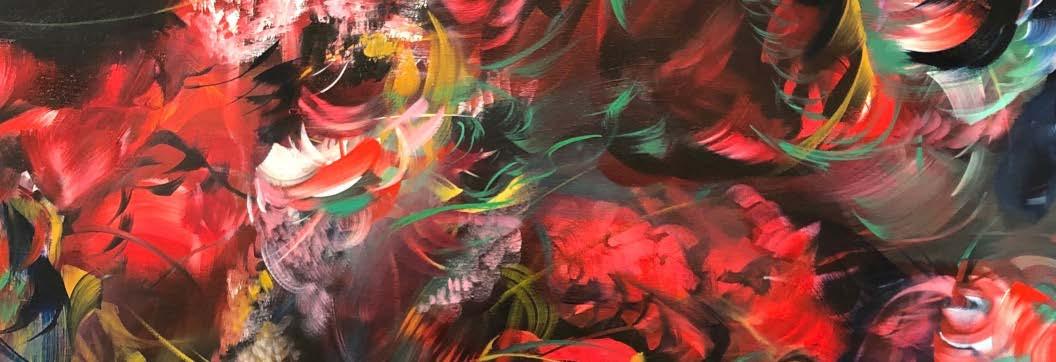
Online Degree Shows resources including expanded interviews with the Class of 2020 graduating artists, plus more profiles and news www.a-n.co.uk/degree-shows
Lydia Makin, Paris Green (detail), 300x 250cm. (BA Fine Art), Slade School of Fine Art, London.
Heather and Ivan Morison, LookLookLook!
Studio visit with Haroon Mirza.
4
Juneau Projects setting up their installation See Birds Want You To Listen To Their Songs. Photo: Colin Davison
5
A+E at a-n Assembly Aberdeen, July 2019. Photo: Abby Quick
6
Tendency Towards at Assembly Swansea, May 2019. Photo: Johan Butenschøn Skre
Thomas Goddard, ‘The Battle of Ninian Park Revisited’, 2019, performance. Photo: Johan Butenschøn Skre
2

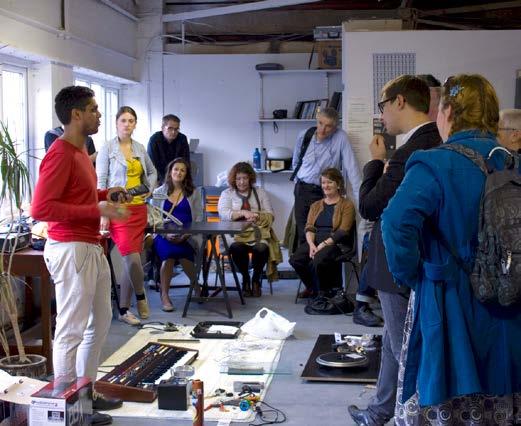
3
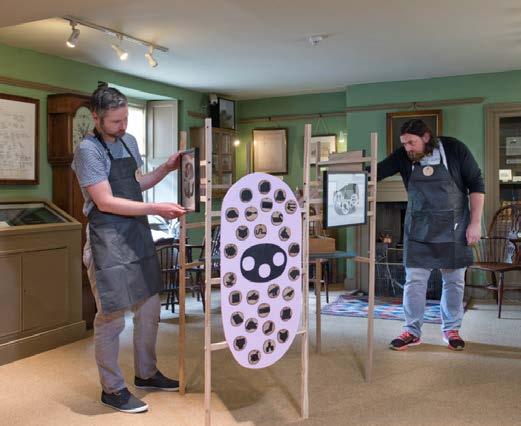
4
Online guides to selling work, approaching galleries, making residency and commission proposals, getting paid and more www.a-n.co.uk/resource
5
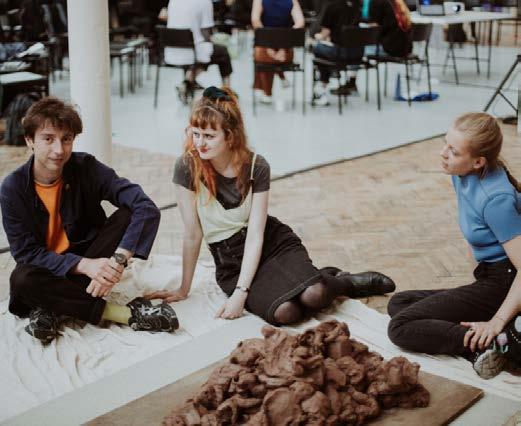

6
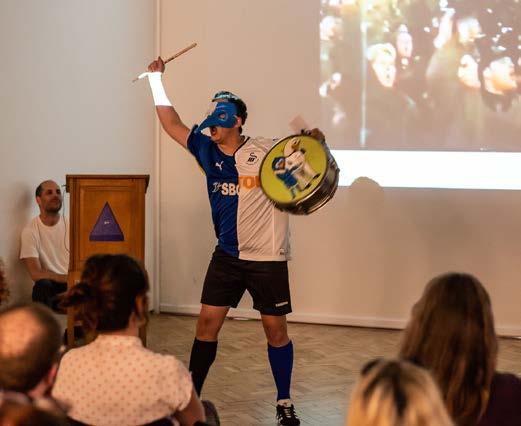
7
Artist-led organisations discuss how they got started on a-n’s YouTube www.youtube.com/ANartistsinfo

Assembly Birmingham, 2018. Photo Marcin Sz
a-n is the largest artists’ membership organisation in the UK with over 25,000 members.
As a member of a-n you get: • professional insurance to cover your work as an artist • access to bursaries to provide funding for professional development • listings to help you find jobs and opportunities • resources, guides and toolkits to support your practice and career • contact with artists and studio groups through events, networking and blogs • the chance to add your voice to the advocacy work we carry out to improve artists’ livelihoods
a-n Artist Membership £38



